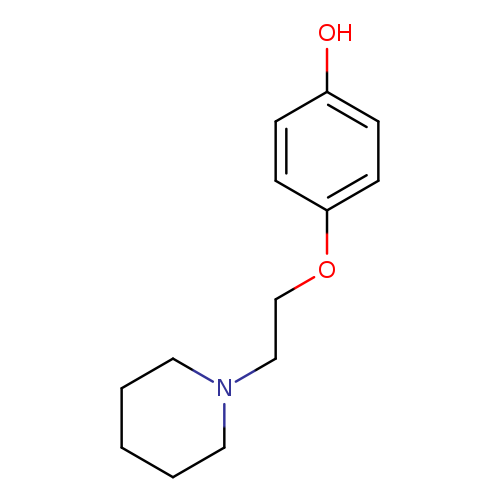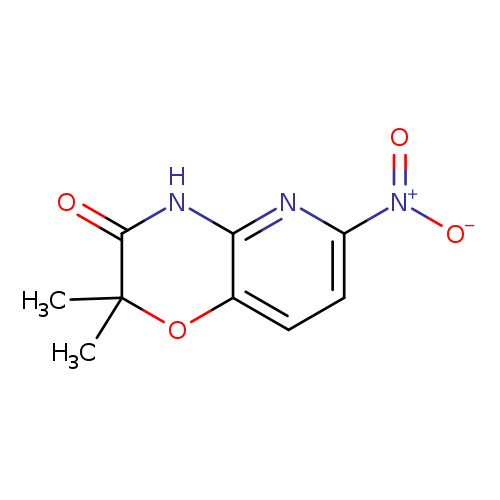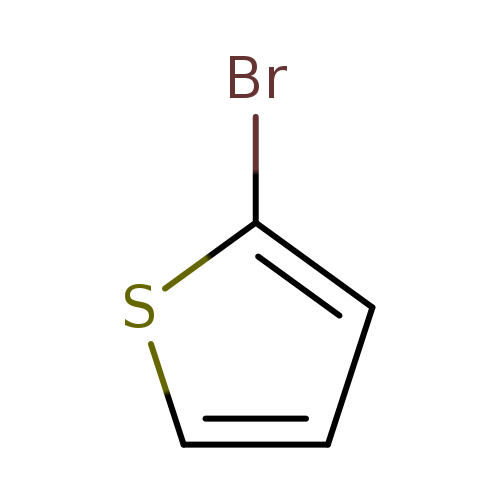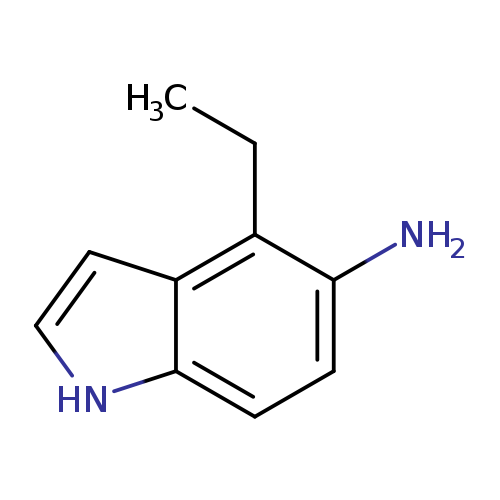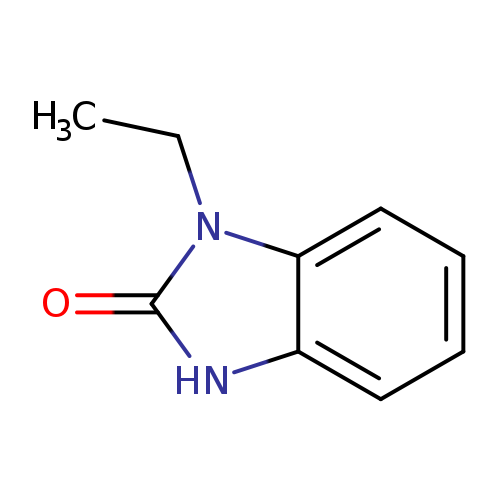Vitalij V. Levin, Pavel K. Elkin, Marina I. Struchkova, Alexander D. Dilman *
N.D. Zelinsky Institute of Organic Chemistry, 119991 Moscow, Leninsky prosp. 47, Russian Federation
A B S T R A C T
A method for the synthesis of pinacol boronic esters bearing a fluorinated group at the a-carbon atom (RfCH2Bpin) from corresponding bromomethyl borane (BrCH2Bpin) and fluorinated silanes (RfSiMe3) is described. The fluoroalkylation reaction involves formation of borate anions followed by intramolecular nucleophilic substitution of bromine.
1. Introduction
Fluorinated organoboron compounds have emerged as valuable reagents with broad scope of applications [1–3]. While various structural types of fluoroboron compounds have been synthesized, boranes 1 bearing a methyl group substituted with a fluorinated fragment have been poorly studied (Scheme 1). Indeed, only compounds with pentafluorophenyl [4] of difluorovinyl [5] groups were described, which were prepared by nucleophilic substitution of halogen in halomethylboranes using fluorinated lithium or magnesium reagents [6]. At the same time, boranes 1 containing trifluoromethyl or fluorinated alkyl substituent at the a-carbon have not been reported. Herein we describe the application of fluorinated silanes as equivalents of fluorinated carbanions for the preparation of boranes 1. Reactions of fluorinated silanes with sp2-centered electrophiles, such as C55O, C55N, and electron-deficient C55C bonds [7], as well as substitution of halogen at sp2-carbon [8], have been studied intensively, whereas reactions with sp3-centered electrophiles are notably less general. The displacement of halogen at the sp3-carbon by fluorinated group can be performed by using fluorinated copper species RfCu generated either from silane [9] or by other means [10]. Alternatively, direct SN2 type substitution can be realized when silane is activated by Lewis base without transition metal [11], though this process provides reasonable yields mainly with alkyl iodides or benzyl and alkyl bromides. The major difference of halomethylboranes from conventional alkyl electrophiles is the ability of boron atom to interact with nucleophile to generate tetracoordinate borate salt [12]. Such a behavior was observed in reaction of alkylborates B(OR)3 and esters of boronic acids RB(OR)2 with TMSCF3 [13]. Therefore, it can be expected that the overall substitution of halogen in halomethylboranes can proceed in two steps: by formation of tetracoordinate borate salt followed by intramolecular SN2 substitution (Scheme 1).
2. Results and discussion
Bromomethyl pinacolborane 2 was reacted with CF3- and C2F5- substituted silanes (3a and 3b, respectively) in the presence of potassium fluoride in DMF at room temperature (Scheme 2). Trifluoromethylated borate salt 4a was formed cleanly and its structure was supported by 19F and 11B NMR spectroscopy. The yield of salt 4a was ca. 85% determined by 19F NMR spectroscopy with internal standard. To effect intramolecular substitution, the resulting solution of salt 4a was briefly heated at 70 8C to effect complete conversion. However, the desired product 5a was isolated in only 45% yield. Analysis of reaction mixture by 19F NMR spectroscopy showed the formation of by-products which we could not identify. The reaction of borane 2 with TMSC2F5 (3b) proceeded similarly generating borate salt 4b, and its subsequent transformation was carried out at 50 8C affording product 5b in 80% yield after vacuum distillation. Functionalized silanes 3c–f were reacted with borane 2 under standard conditions (Table 1). In this case the formation of products 5 did not require heating, and proceeded at a rate

comparable to that of the formation of the intermediate borate salts. These observations suggest that the rate of intramolecular SN2 substitution increases with increasing carbanion stability of migrating group. As a rule, products 5 were formed with the yields exceeding 50%, while their purification was accompanied by product losses. The general problem for the preparation of 2,2,2-trifluoroethyl and related organometallic reagents is the facile b-elimination of metal fluoride from the fragment RCF2CH2M. Rewardingly, boranes 5 are thermally stable compounds showing no tendency for belimination under neutral conditions. However, borane 5c is prone to decomposition in CDCl3 solution, as well as neat upon storage at 5 8C, leading to unidentified mixture despite the fact that it can be distilled under vacuum.
3. Conclusions
In summary, a method for the synthesis of fluorine-substituted pinacolboranes by nucelophilic fluoroalkylation has been described. Taking into account the rich chemistry of organoboron compounds, the obtained boranes may find applications in transition metal catalyzed cross-couplings, as well as in other reactions involving transfer of a partially fluorinated group from boron.
4. Experimental
4.1. General experimental procedures All reactions were performed under an argon atmosphere. DMF was distilled under vacuum from P2O5 and stored over MS 4 A˚ . NMR spectra were recorded on a Bruker AM-300 instrument. Microanalyses were performed on KarloErba 1106 instrument. Me3SiCF3 and Me3SiC2F5 were purchased from P&M. Silanes 3c[14], 3d,f [15] were obtained according to the literature procedures.


4.2. 2-(Bromomethyl)-4,4,5,5-tetramethyl-1,3,2-dioxaborolane (2)[16] To a stirred solution of triisopropylborate (32.5 mL, 141 mmol) and dibromomethane (10.8 mL, 154 mmol) in anhydrous THF (150 mL) at _94 8C (acetone/liquid nitrogen), n-BuLi (54 mL of 2.4 M solution in hexane, 128 mmol) was added dropwise over 2 min at such a rate that the internal temperature did not rise above _80 8C. The resulting mixture was stirred for 15 min at _78 8C, the cooling bath was removed, and the mixture was stirred for 2 h at room temperature. The reaction mixture was cooled to 0 8C (ice/water bath) and a solution of concentrated sulfuric acid (3.8 mL, 70 mmol) in methanol (8.0 mL) was added dropwise over 2 min. The reaction was allowed to reach room temperature and was stirred for 1 h. Pinacol (12.1 g, 128 mmol) was added in one portion, and the mixture was stirred for 1 h at room temperature. The volatiles were removed under vacuum, and the residue was distilled (70 8C/12 Torr) to give 25.5 g (90% yield) of borane 2 as a colorless liquid.
4.3. Ethyl difluoro(trimethylsilyl)acetate (3e) [17] Ethyl bromodifluoroacetate (3.2 mL, 25 mmol) was added dropwise to a suspension of magnesium turnings (1.21 mg, 50 mmol) and chlorotrimethylsilane (9.6 mL, 75 mmol) in anhydrous DMF (40 mL) at 0 8C. The reaction mixture was stirred for 90 min at room temperature and quenched with water (40 mL). The aqueous layer was extracted with pentane (3 _ 15 mL), the combined organic phase was washed with water, dried over Na2SO4. The solvent was evaporated under vacuum, and the residue distilled (110–111 8C/90 Torr) furnishing product 3e as a pale yellow oil (2.71 g, 55%).
4.4. Borate salt 4a KF (145 mg, 2.5 mmol) was added to a solution of borane 2 (550 mg, 2.5 mmol) and silane 3a (443 mL, 3 mmol) in DMF (2.5 mL), and the resulting suspension was stirred for 18 h at room temperature. The stirring was discontinued, and the aliquot was analyzed by NMR spectroscopy. 19F NMR (282 MHz, DMF), d: _67.7 (br). 11B NMR (96 MHz, DMF), d: 1.2 (br).
4.5. Synthesis of boranes 5a,b KF (291 mg, 5 mmol) was added to a solution of borane 2 (1.10 g, 5 mmol) and silane 3a or 3b (6 mmol) in DMF (5 mL), the resulting suspension was stirred for 18 h at room temperature, and then heated on water bath (for 5a, 1.5 h at 70 8C; for 5b, 1 h at 50 8C). The mixture was extracted with pentane (2 _ 12 mL). More pentane (10 mL) was added to the DMF layer, the two-phase mixture was shaken, water (5 mL) was added, the mixture was again shaken, and the pentane layer was separated. The combined pentane phase was washed with water (3 _ 3 mL), dried (Na2SO4), and pentane was evaporated at atmospheric pressure. The residue was distilled under vacuum. 4.5.1. 4,4,5,5-Tetramethyl-2-(2,2,2-trifluoroethyl)-1,3,2- dioxaborolane (5a) 472 mg, 45% yield. Bp 60–65 8C (bath temp.)/12 Torr. 1H NMR (300 MHz, CDCl3), d: 1.27 (s, 12H, 4Me), 1.80 (q, 2H, J = 13.0, CH2). 13C NMR (75 MHz, CDCl3), d: 24.6, 84.3, 127.2 (q, J = 274.1). 19F NMR (282 MHz, CDCl3), d: _58.1 (t, J = 13.0). Anal. Calcd for C8H14BF3O2 (210.00) C, 45.75; H, 6.72. Found: C, 45.64; H, 6.65. 4.5.2. 4,4,5,5-Tetramethyl-2-(2,2,3,3,3-pentafluoropropyl)-1,3,2- dioxaborolane (5b) 840 mg, 80% yield. Bp 62–68 8C (bath temp.)/9 Torr. 1H NMR (300 MHz, CDCl3), d: 1.27 (s, 12H, 4Me), 1.69 (t, 2H, J = 21.1, CH2). 13C NMR (75 MHz, CDCl3), d: 24.6, 84.4, 116.1 (tq, J = 251.0, 38.6), 119.3 (qt, J = 285.0, 37.4). 19F NMR (282 MHz, CDCl3), d: _109.2 (t, 2F, J = 21.1), _87.2 (s, 3F). Anal. Calcd for C9H14BF5O2 (260.01): C, 41.57; H, 5.43. Found: C, 41.47; H, 5.45. 4.6. 2-[2,2-Difluoro-2-(phenylthio)ethyl]-4,4,5,5-tetramethyl-1,3,2- dioxaborolane (5c) KF (291 mg, 5 mmol) was added to a solution of borane 2 (1.10 g, 5 mmol) and silane 3c (1.39 g, 6 mmol) in DMF (5 mL), and the resulting suspension was stirred for 18 h at room temperature. For the work-up, the mixture was extracted with pentane (2 _ 12 mL). More pentane (10 mL) was added to the DMF layer, the two-phase mixture was shaken, water (5 mL) was added, the mixture was again shaken, and the pentane layer was separated. The combined pentane phase was washed with water (3 _ 3 mL), dried (Na2SO4), and concentrated under vacuum. To remove the excess of starting silane 3c, the crude product was dissolved in DMF (5 mL), treated with MeOH (101 mL, 2.5 mmol) and NaOAc (82 mg, 1 mmol), and the mixture was stirred for 18 h. The workup with pentane (as described above) gave crude product which was distilled under vacuum. 1.27 g, 85% yield. Bp 115–120 8C (bath temp.)/1 Torr. 1H NMR (300 MHz, CDCl3), d: 1.31 (s, 12H, 4Me), 1.92 (t, 2H, J = 17.5), 7.23–7.48 (m, 3H, Ph), 7.60–7.70 (m, 2H, Ph). 13C NMR (75 MHz, CDCl3), d: 24.6, 84.0, 127.8 (t, J = 2.1), 128.9, 129.0 (t, J = 277.8) 129.5, 136.0. 19F NMR (282 MHz, CDCl3), d: _63.7 (t, J = 17.5). 4.7. 2-[2,2-Difluoro-2-(phenylsulfonyl)ethyl]-4,4,5,5-tetramethyl- 1,3,2-dioxaborolane (5d) KF (291 mg, 5 mmol) was added to a solution of borane 2 (1.10 g, 5 mmol) and silane 3d (1.58 g, 6 mmol) in DMF (5 mL), and the resulting suspension was stirred for 18 h at room temperature. The mixture was extracted with hexane (2 _ 12 mL). More hexane (10 mL) was added to the DMF layer, the two-phase mixture was shaken, water (5 mL) was added, the mixture was again shaken, and the hexane layer was separated. The combined hexane phase was washed with water (3 _ 3 mL), dried (Na2SO4), and concentrated under vacuum. The crude product was recrystallized from methanol. 913 mg, 55% yield. Mp 94–96 8C. 1H NMR (300 MHz, CDCl3), d: 1.26 (s, 12H, 4Me), 1.98 (t, 2H, J = 21.5, CH2), 7.54–7.62 (m, 2H, Ph), 7.72 (t, 1H, J = 7.3, Ph), 7.96 (d, 2H, J = 8.0, Ph). 13C NMR (75 MHz, CDCl3), d: 24.6, 84.4, 125.2 (t, J = 284.5), 129.2, 130.8, 132.4, 135.1. 19F NMR (282 MHz, CDCl3), d: _95.9 (t, J = 21.5). Anal. Calcd for C14H19BF2O4S (332.17): C, 50.62; H, 5.77. Found: C, 50.60; H, 5.86. 4.8. Synthesis of boranes 5e,f KF (291 mg, 5 mmol) was added to a solution of borane 2 (1.10 g, 5 mmol) and silane 3e or 3f (6 mmol) in DMF (5 mL), and the resulting suspension was stirred for 18 h at room temperature. The mixture was extracted with hexane (2 _ 12 mL). More hexane (10 mL) was added to the DMF layer, the two-phase mixture was shaken, water (5 mL) was added, the mixture was again shaken, and the hexane layer was separated. The combined hexane phase was washed with water (3 _ 3 mL), dried (Na2SO4), concentrated under vacuum, and the residue was distilled under vacuum. 4.8.1. Ethyl 2,2-difluoro-3 (4,4,5,5-tetramethyl-1,3,2-dioxaborolan- 2-yl)propanoate (5e) Bp 109–111 8C/1.9 Torr. 1H NMR (300 MHz, CDCl3), d: 1.26 (s, 12H, 4Me), 1.36 (t, 3H, J = 7.2, Me), 1.80 (t, 2H, J = 18.4, CF2CH2), 4.33 (q, 2H, J = 7.2, OCH2). 13C (75 MHz, CDCl3), d: 13.9, 24.6, 62.5, 84.1, 116.5 (t, J = 249.0), 164.3 (t, J = 33.4). 19F NMR (282 MHz, CDCl3), d: _95.9 (t, J = 18.4). Anal. Calcd for C11H19BF2O4 (264.07): C, 50.03; H, 7.25. Found: C, 50.25; H, 7.51. 4.8.2. Diethyl 1,1-difluoro-2-(4,4,5,5-tetramethyl-1,3,2- dioxaborolan-2-yl)ethylphosphonate (5f) The product contains ca. 10% of CHF2PO(OEt)2. Bp 135–137 8C/ 1.5 Torr. 1H NMR (300 MHz, CDCl3), d: 1.25 (s, 12H, 4Me), 1.33 (t, 6H, J = 7.0, 2Me), 1.72 (td, 2H, J = 23.7, 6.6), 4.23 (qd, 4H, J = 7.2, 7.2, 2OCH2). 13C NMR (75 MHz, CDCl3), d: 16.3 (d, J = 5.2), 24.6, 64.2 (d, J = 6.3), 83.9, 120.9 (td, J = 258.8, 220.0). 19F NMR (282 MHz, CDCl3), d: _102.5 (dt, J = 112.8, 23.3). 31P (121 MHz, CDCl3), d: 7.57 (t, J = 112.8). HRMS (ESI) Calcd for C12H25BF2O5P (M+H): 329.1497. Found: 329.1499. Acknowledgments This work was supported by Russian Foundation for Basic Research (Project 11-03-00362) and the Ministry of Science (Project MD-4750.2013.3). Appendix A. Supplementary data Supplementary data associated with this article can be found, in the online version, at http://dx.doi.org/10.1016/j.jfluchem.2013. 06.007. References
[1] For reviews on C6F5-substituted boranes, see:
(a) W.E. Piers, T. Chivers, Chem. Soc. Rev. 26 (1997) 345–354;
(b) W.E. Piers, Adv. Organomet. Chem., Elsevier Academic Press Inc., San Diego,2005, pp. 1–76;
(c) D.W. Stephan, G. Erker, Angew. Chem. Int. Ed. 49 (2010) 46–76.
[2] For reviews on CF3-substituted boranes, see:
(a) G. Pawelke, H. Bu¨ rger, Appl. Organomet. Chem. 10 (1996) 147–174;
(b) M. Finze, E. Bernhardt, H. Willner, Angew. Chem. Int. Ed. 46 (2007) 9180–9196.
[3] For a general review of polyfluorinated organic compounds of boron, see:Yu.N. Adonin, V.V. Bardin, Russ. Chem. Rev. 79 (2010) 757–785.
[4] (a) R.P. Singh, B. Twamley, L. Fabry-Asztalos, D.S. Matteson, J.M. Shreeve, J. Org.Chem. 65 (2000) 8123–8125;
(b) P.V. Ramachandran, M.P. Jennings, J. Fluorine Chem. 128 (2007) 827–831.
[5] (a) P.V. Ramachandran, A. Chatterjee, Org. Lett. 10 (2008) 1195–1198;
(b) P.V. Ramachandran, A. Chatterjee, J. Fluorine Chem. 130 (2009) 144–150;
(c) P.V. Ramachandran, A. Tafelska-Kaczmarek, A. Chatterjee, J. Org. Chem. 77(2012) 9329–9333;
(d) P.V. Ramachandran, A. Tafelska-Kaczmarek, K. Sakavuyi, Org. Lett. 13 (2011)4044–4047.
[6] Different approach for the preparation of a borane bearing C6F5CH2 group wasdemonstrated based on iridium catalyzed C–H borylation of C6F5CH3; see
(a) T.A. Boebel, J.F. Hartwig, Organometallics 27 (2008) 6013–6019;For alternative approach toward difluorovinyl-type borane based on coppercatalyzed boration/elimination sequence, see
(b) R. Corbera´ n, N.W. Mszar, A.H. Hoveyda, Angew. Chem. Int. Ed. 50 (2011)7079–7082.
[7] (a) G.K.S. Prakash, A.K. Yudin, Chem. Rev. 97 (1997) 757–786;
(b) R.P. Singh, J.M. Shreeve, Tetrahedron 56 (2000) 7613–7632;
(c) A.D. Dilman, V.V. Levin, Eur. J. Org. Chem. (2011) 831–841.
[8] For a recent review, see:
T. Liu, Q. Shen, Eur. J. Org. Chem. (2012) 6679–6687.
[9] J. Kim, J.M. Shreeve, Org. Biomol. Chem. 2 (2004) 2728–2734.
[10] (a) Q.-Y. Chen, J.-X. Duan, Tetrahedron Lett. 34 (1993) 4241–4244;
(b) H. Kawai, T. Furukawa, Y. Nomura, E. Tokunaga, N. Shibata, Org. Lett. 13(2011) 3596–3599;
(c) Q.-Y. Chen, S.-W. Wu, J. Chem. Soc. Chem. Commun. (1989) 705–706.
[11] (a) W. Tyrra, D. Naumann, S. Quadt, S. Buslei, Y.L. Yagupolskii, M.M. Kremlev, J.Fluorine Chem. 128 (2007) 813–817;
(b) Y. Li, J. Hu, J. Fluorine Chem. 129 (2008) 382–385;
(c) L. Zhu, Y. Li, Y. Zhao, J. Hu, Tetrahedron Lett. 51 (2010) 6150–6152.
[12] For the chemistry of a-haloboronic esters, see:
D.S. Matteson, Chem. Rev. 89 (1989) 1535–1551.
[13] (a) G.A. Molander, B.P. Hoag, Organometallics 22 (2003) 3313–3315;
(b) A.A. Kolomeitsev, A.A. Kadyrov, J. Szczepkowska-Sztolcman, M. Milewska, H.Koroniak, G. Bissky, J.A. Barten, G.-V. Ro¨ schenthaler, Tetrahedron Lett. 44 (2003)8273–8277;
(c) P.K. Elkin, V.V. Levin, A.D. Dilman, M.I. Struchkova, P.A. Belyakov, D.E. Arkhipov,A.A. Korlyukov, V.A. Tartakovsky, Tetrahedron Lett. 52 (2011) 5259–5263.
[14] F. Toulgoat, B.R. Langlois, M. Medebielle, J.Y. Sanchez, J. Org. Chem. 72 (2007)
9046–9052.
[15] M.D. Kosobokov, A.D. Dilman, M.I. Struchkova, P.A. Belyakov, J. Hu, J. Org. Chem.
77 (2012) 2080–2086.
[16] A.P. Pulis, V.K. Aggarwal, J. Am. Chem. Soc. 134 (2012) 11298.
[17] K. Fujikawa, Y. Fujioka, A. Kobayashi, H. Amii, Org. Lett. 13 (2011) 5560–5563.







